Many brands, investors and people are uncertain about the success of non-fungible tokens. They wonder if NFTs are something of substance or just a passing fad.
No doubt about it, the popularity of NFTs is on the rise. In early 2021, there was a sharp increase in the weekly sales of NFTs online. In April and May of 2023, there were 1,000-3,000 unique wallets buying NFTs on any given day.
In this guide, I’m going to explain what an NFT is and, more specifically, how they can help your business. We’ll cover:
- A comprehensive definition of non-fungible tokens
- A brief history of how they came to be
- Various uses of NFTs
- How NFTs work
- How NFTs can benefit your business
- Examples of brands and artists using NFTs
So, if you want to finally understand NFTs in the real world, keep reading!
Book My Free NFT Marketing Consultation
What Are NFTs?
NFT stands for Non-Fungible Token. These are unique digital assets that link ownership to digital or real-world assets, such as art, real estate, computer programs, photographs, music or videos.
Fungible means ‘replaceable by another identical item’, so non-fungible is a one-of-a-kind digital identifier.
Digital assets are generally fungible, meaning that one can easily reproduce a digital code, photograph or video, so it is difficult to assign uniqueness or ownership of such assets.
NFTs help solve this problem by representing each unique asset, either digital or real-world, thereby granting ownership to these fungible assets. They can be thought of as a sort of digital authenticity certificate. They exist on digital ledgers, commonly called blockchains, that cryptographically assign and prove ownership of digital assets publicly.
Just like cryptocurrencies, NFTs can be bought or sold on blockchains, and since they can have only one owner at one time, the ownership can be publicly verified through blockchains:
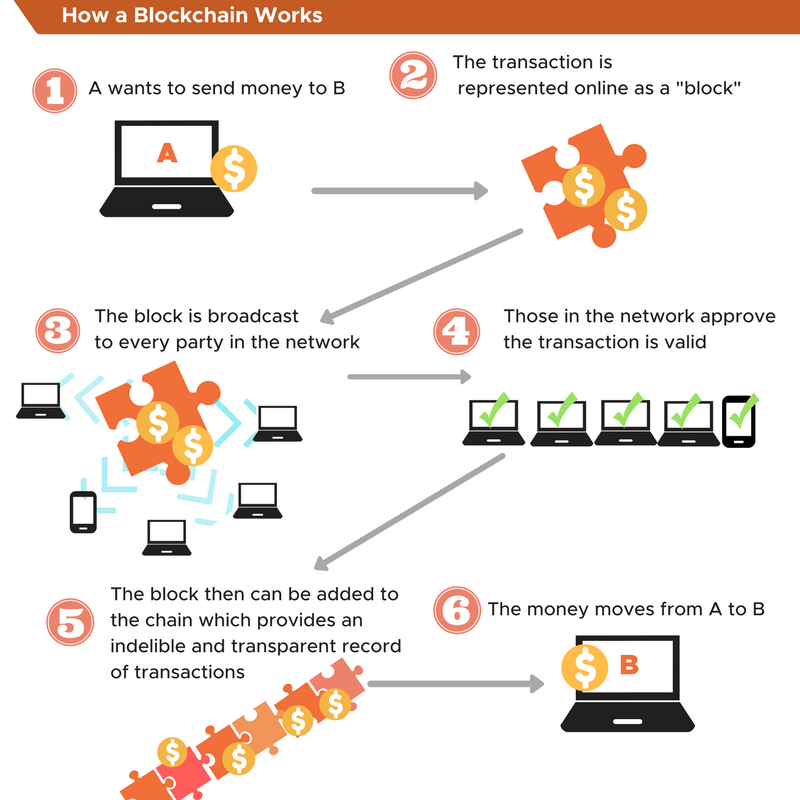
Although numerous blockchains support non-fungible tokens, the Ethereum blockchain is the most popular one used for holding NFTs.
The key difference between an NFT and a cryptocurrency is the “non-fungible” nature of NFTs.
Cryptocurrencies can be exchanged for one another, while each NFT represents a unique asset with a different value that cannot be exchanged for any other. And though cryptocurrency is available in unlimited numbers, NFTs are either strictly one of a kind or available in limited numbers.
New to cryptocurrency? Check out:
Why and How to Accept Cryptocurrency on Your Website
Brief History of Non-Fungible Tokens
In 2012-2013, the Ethereum creator Vitalik Buterin came up with the idea of “Colored Coins,” which were a small denomination of bitcoins, that would represent real-world assets, such as real estate or art. Although the colored coins did not last long, they opened up doors for experimenting with the concept of putting real-world assets on the blockchain.
In 2014, a peer-to-peer open-source online protocol for a financial platform called Counterparty was created, which enabled game creators to issue in-game digital assets on blockchain in 2015.
Subsequently, in October 2016, memes issued as collectibles were launched on Counterparty, and in 2017, Cryptopunks launched a worldwide marketplace for digital art on Ethereum. Gradually, different digital and real-world assets came to be tokenized and traded on Cryptopunks, and a robust secondary market for NFTs came into existence.
Today, there are many platforms for mining NFTs, such as:
And numerous marketplaces for NFTs that allow trading in NFTs, such as:
Learn more about today’s content creators:
What Is the Creator Economy (& Why Should You Care)?
What Are NFTs Used For?
NFT are unique and indivisible and, as mentioned above, they provide the ability to assign and claim ownership of digital data. Because of their non-replicable nature, they are being used to offer “special” digital products.
They can be used to represent anything from digital art, such as:
- GIFs, memes
- tweets
- music
- videos
- feature-length movies
- sports highlight clips
- artwork
- domain names
Or real-world items, such as:
- tokenized invoices
- signatures
- legal documents, like patents
- tickets to events
- real estate
Book My Free NFT Marketing Consultation
How Do NFTs Work?
The concept of NFTs is still fairly new, so understanding exactly how they work can be a bit difficult for anyone not in the business.
As we touched on above, a blockchain is a decentralized, public ledger on which cryptocurrency (financial) and NFT (digital asset) transactions are made and recorded. Most NFTs are bought and sold on Ethereum, although other blockchains are now creating their own NFTs.
These NFTs are minted through smart contracts that help transfer the ownership. You can only have one NFT owner at a time, so the NFT buyer has sole ownership that is managed through a unique ID. When an individual mints an NFT, they execute code stored in the form of smart contracts.
Just as regular coins are minted, or created and marked, so are NFTs. The minting process of a non-fungible token is as follows:
- Create a blockchain
- Validate the information
- Record information into the blockchain
In the same way that you store your cash in your wallet, you store NFTs in a digital wallet. “Ethereum wallets are applications that let you interact with your Ethereum account. Think of it like an internet banking app – without the bank. Your wallet lets you read your balance, send transactions and connect to applications.”
How you make money with NFTs is by buying and selling them for a profit. They are often auctioned off to the highest bidder.
Nyan the flying cat with a pop-tart body is an example of an NFT that sold for a whopping $600,000:
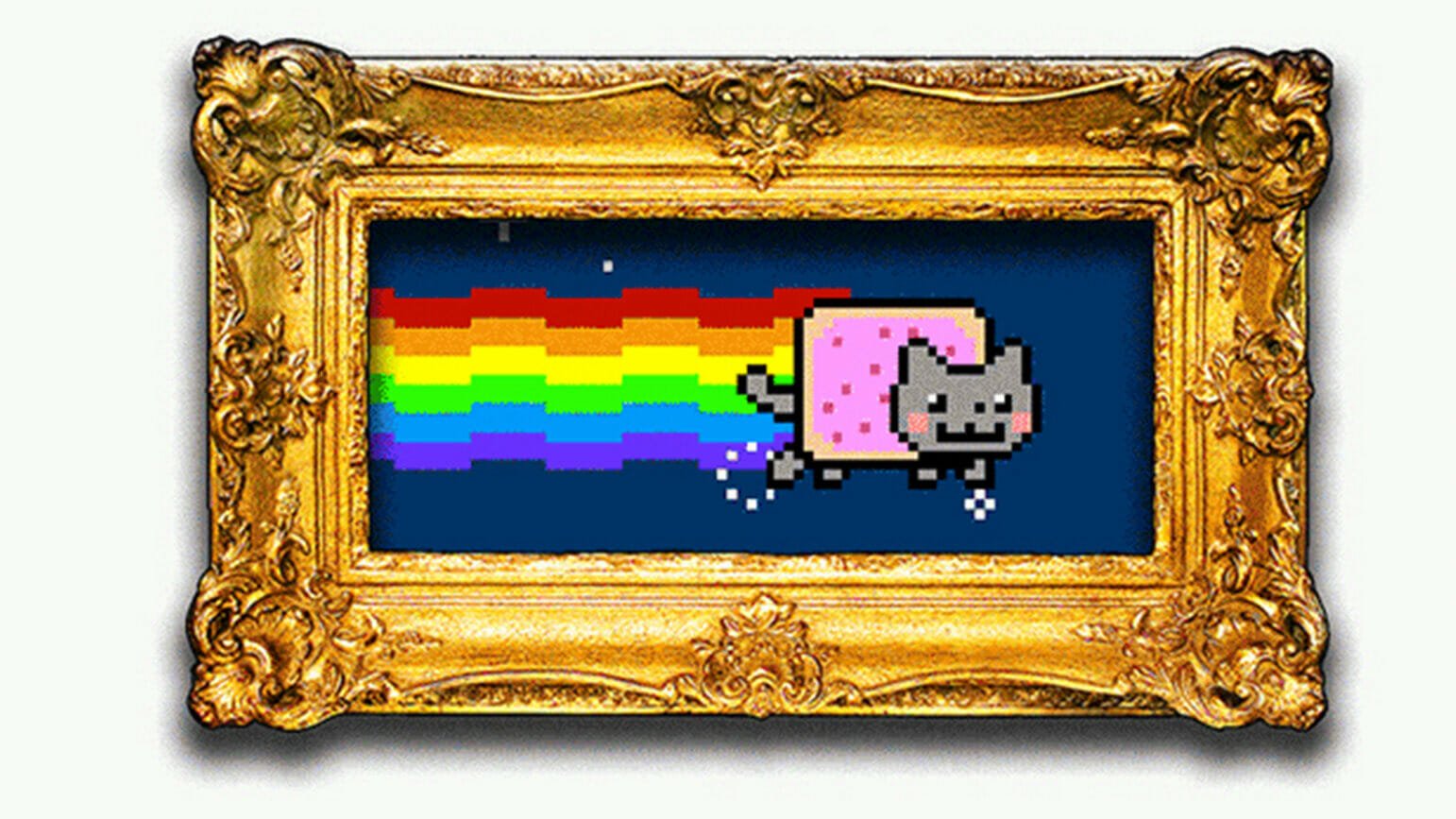
New to blockchain? Check out:
The Ultimate Guide to Blockchain Digital Marketing and Cryptocurrency
How NFTs Benefit Businesses
Well, the scope of NFTs and the impact on business is still a debatable question. Most people think the NFT is just a bubble and has a limited future.
However, some digital experts do have an opinion that NFTs can be lucrative in the long run. They can enable companies to leverage digital opportunities to the fullest and give their business a distinct edge.
An NFT offers a forward-thinking perspective to a business. It exposes a business to endless possibilities.
The seamless integration of NFTs is one of its striking advantages for the business. Here are several ways NFTs can benefit businesses:
- It gives one a chance to counteract the unraveling of customer engagement with safe, secure and reliable revenue streams. The scope and role of NFTs in retail marketing cannot be missed at all.
- Connecting an NFT with AR and VR can be advantageous. It can bridge the gap between the customers and the brand and facilitate an immersive experience.
- Including NFTs in business can play a major role in streamlining finance and operations. It can allow one to organize the company’s finances and create a decentralized system, and utilized to identify the profit or return on the investments or assets such as data.
- A business can efficiently use NFTs to track lot deployment, identify replicas, or for an auditable trail of ownership.
- It is non-replicable and secure, so an NFT ensures authenticity. It is easy to trade freely with NFTs.
In short, NFTs help you:
- Increase brand awareness
- Encourage interaction
- Create unique brand experiences
- Create interest in your brand and product
- Increase conversions and drive revenue
Book My Free NFT Marketing Consultation
How to Use NFTs in Your Business
You can use NFTs in your business to improve your interaction with your customers and increase brand awareness. Here are some tips for the best way to use NFTs:
- Use NFTs in the form of GIFs to stand out from your competition.
- Allow your audience to purchase NFTs within a specific time frame. It helps create a community around your business.
- Use NFTs for charity auctions. This helps you create awareness about the charity that you support.
- Create competitions with NFTs as prizes. This will encourage people to buy your NFTs.
- Enable buyers to purchase the NFT versions of your products. This will help you grow your business.
New to NFT marketing? Check out:
NFT Marketing: Everything You Need to Know to Get Started
How to Integrate NFTs into Your Business
Follow these steps to successfully integrate NFTs into your business:
1) Identify the NFT Use Case
First, you need to identify use cases of NFTs. The major NFT use cases are:
- NFT art: In April 2021, around 23,700 NFTs were sold in the art segment within a span of 30 days. Digital artists can use NFTs to make and sell their artwork as unique pieces, as it promotes digital authenticity and ownership. One can purchase a particular piece of digital art by making the highest bid. NFTs are valuable as they belong to a single owner. Everydays: The First 5000 Days by artists Beeple is the highest priced NFT at $69.4 million:

- Digital collectibles as NFTs: The demand for unique crypto collectibles is high. A digital collectible is a digital item authenticated using blockchain technology, making it unique and limited. One of the examples of digital collectibles is CryptoKitties, a blockchain game on Ethereum where you can purchase, collect, breed and sell virtual cats. However, the value of each digital collectible is determined by various factors, such as rare looks, features, and utility.
- Online gaming: There has been a huge demand for digital in-game purchases. Thus, the gaming industry is tapping into NFTs. The price of these in-game purchases is directly related to rarity, uniqueness, and value. These micro-transactions related to in-game purchases have created a multi-billion-dollar gaming industry.
- Tickets: Event tickets are tokenized using NFT to prevent the possibility of counterfeit tickets or stealing tickets. All transactions of tokenized tickets are recorded on the blockchain, establishing the ownership of the tickets.
- Fashion: An NFT can help you to make virtual fashion items unique and designed as tangible products. It can help you solve the problem of reproducibility of clothing digitally. as NFTs allow you to widen the catalog and sell the product on a bigger platform.
Use cases of NFTs are not limited to the above examples. There are various other use cases, such as finance NFTs, real-world asset NFTs, or logistics NFTs.
2) Choose the Appropriate Blockchain Technology
The next step in integrating NFTs into your business is to choose your blockchain. You need to mint your asset onto a blockchain to be owned and sold as an NFT.
It is important to choose your blockchain wisely because you cannot transfer your digital asset to other blockchains once you mint it onto a specific blockchain. You also need to consider factors such as scalability, infrastructure, transaction costs, ecosystem, interoperability, and decentralization.
Here are a few blockchain options:
Most NFTs run on the Ethereum blockchain, as it is a mature technology. However, other blockchains are also coming into the picture by supporting new players in the NFT space, such as NBA Top Shot.
3) Store Your Digital Asset
Once you have chosen which blockchain to mint your digital asset on, you need to decide how and where to store it.
There are three options for storing your digital asset:
- Blockchain storage: This is a decentralized method of storage, as opposed to traditional centralized cloud storage. You can store your NFTs on the block, but if you have a large file, it is convenient to use blockchain for storage purposes because of the price involved. Storing a 1 MB file on the Ethereum blockchain can cost you up to $20,000.
- Centralized storage: Another option is storing your digital asset in a centralized way, such as a server or the cloud. In this case, the NFT would direct to a URL of the digital file stored in the centralized place. The drawback is if the NFT creator stops hosting that file, your NFT would be directed to nothing.
- Decentralized storage: Decentralized storage is one of the best options, as it includes IPFS, which stands for Interplanetary File System. IPFS was built to eventually surpass HTTP to improve the web. Your storage files are spread across a distributed network. Thus, you are not dependent on a single entity.
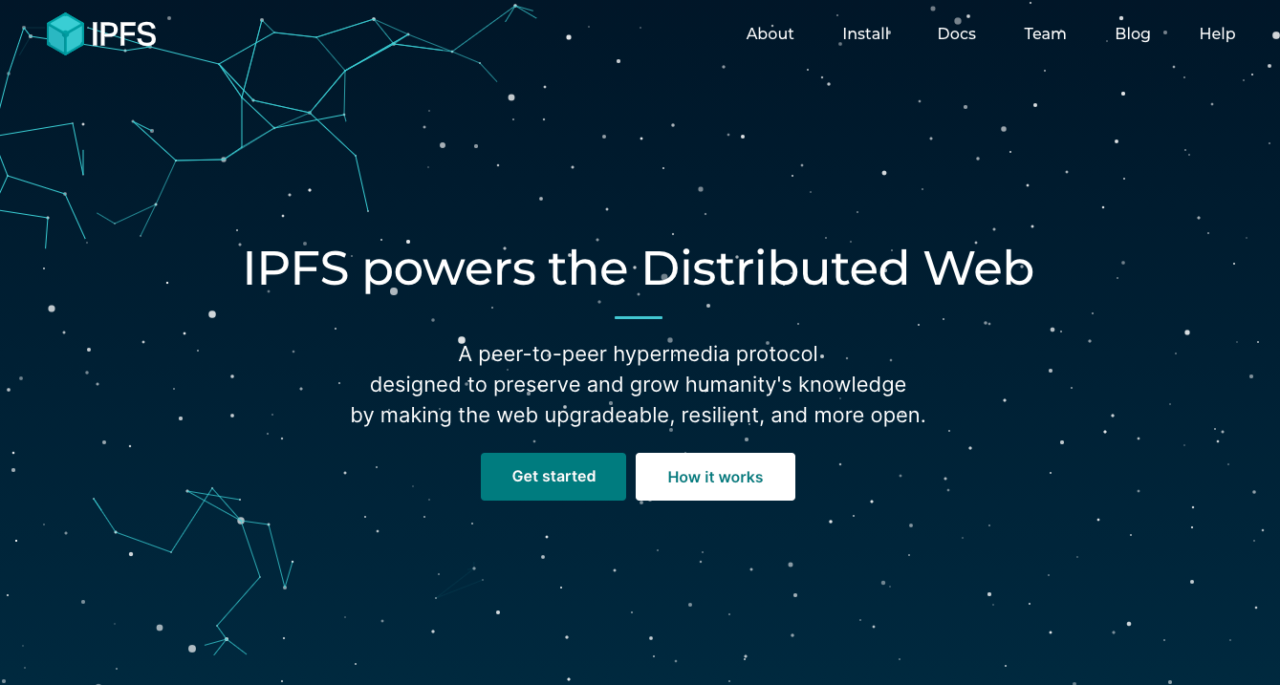
There are several ways to store your digital assets, but one of the best option is decentralized storage, as it is more sustainable and immutable.
You can also store your NFTs in crypto wallets, which are associated with a public or private key pair. If you have any crypto assets, it is better to buy a cold storage wallet to keep your assets safe. There are various wallets available, which offer different levels of security, such as:
4) Identify Additional Engagement Opportunities
The last step to integrating NFTs into your business is to identify engagement opportunities. Use your creativity and added benefits to NFTs in order to engage with your customers. Here are a few ways to add benefits:
- Offer a physical item to anyone who buys your NFT.
- Combine NFTs with tickets for an event or concert.
- Provide loyalty rewards in NFTs to incentivize a certain behavior.
- Enhance the utility of NFTs by offering features that can be unlocked in games or the virtual world using NFTs.
- Use them for risk management, such as volatility risks, fraud risks or security risks.
By providing these benefits, you can maximize the value of your business with NFTs.
Need a list of NFT marketing agencies? Check out:
NFT Marketing Agencies: Best Way to Promote Your NFT Project
Examples of Brands Using NFTs
Here are a few examples of some popular brands that are successfully using NFTs:
1) Taco Bell GIFs
Taco Bell was the first fast-food chain to use NFTs. They launched a series of taco-themed NFT GIFs and images, which included:
- Gimme That
- Dimensions
- Ever-Crunching
- Swivel Tacos
- Transformative
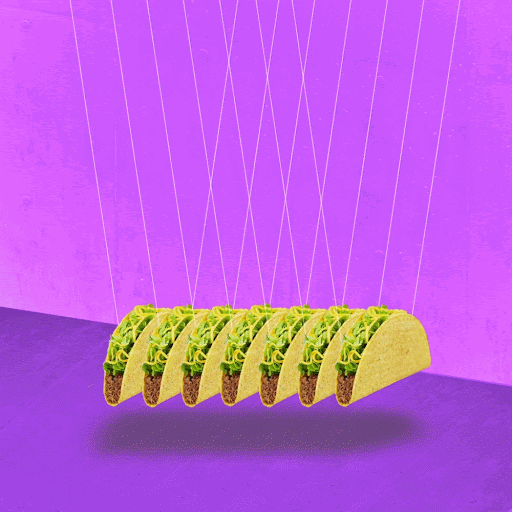
Taco Bell released five editions of each of these five NFTs (25 in total) for bidding and sold out in 30 minutes on the Rarible marketplace, with the highest bid reaching 1.5 wETH.
Note: Ether (ETH) is the native cryptocurrency of the Ethereum blockchain, similar to Bitcoin. Wrapped ETH (wETH) is the compatible version of Ether with ERC-20 standards. ERC-20 is a standard for fungible tokens.
The bidding price for each NTF was around $1, and all sold for thousands, with the highest going for $3,646.
Leveraging the NFT trend was a clever move by Taco Bell to generate buzz on mainstream media, social media, and among young audiences. In fact, Taco Bell took the next step and offered a $500 e-gift card to the owners of the “Transformative Taco” NFT. They can use the e-gift card to order from the Yum! brand. The fast food brand also donated proceeds to the Live Más Scholarship to support the Taco Bell Foundation’s youth scholarships.
Key takeaways:
- Combine physical gifts with digital artwork to entice your consumers.
- Link your NFTs to a social cause to raise funds in a new and engaging way.
This helps you to drive brand awareness and support a good cause.
Learn More: NFT Marketing: Everything You Need to Know to Get Started
2) Grimes Videos
The musician and artist Grimes, whose real name is Claire Boucher, recently sold digital artworks for $6 million on Nifty Gateway. It was a collection of 10 NFTs that included images, film clips, animations, and poems.
Most of the sales amount came from the two short video pieces, “Earth” and “Mars.” Both these videos featured the titular planet with a giant cherub over it holding a weapon. Six hundred copies of these two videos were sold for $7,500 each, generating a total of $4.5 million.
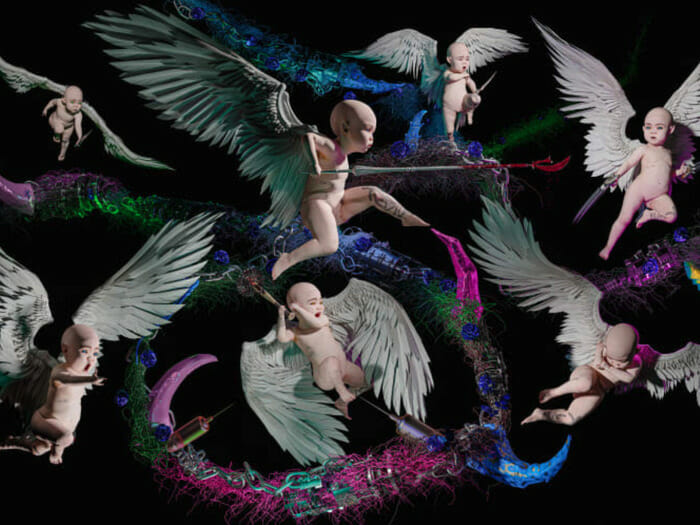
Another high-selling piece was a video called “Death of the Old,” which includes flying cherubs, a cross, a sword, and glowing light that resembles an original song by Grimes. After a bidding war between four buyers for this one-of-a-kind video piece, the winning bidder took it for nearly $400,000.
Later, the Nifty Gateway announced that they would donate a certain percentage of Grimes’ sales to Carbon180, a nonprofit with an aim to remove carbon from the atmosphere.
Thus, for artists, NFTs are a new way to monetize their work, allowing them to sell their digital artworks and benefit from the resale value.
Key takeaways:
- Partner with artists and present your brand in the auction.
- Auction your NFT for charity.
- Run a contest by providing NFTs as prizes.
3) Coca-Cola Friendship NFTs
Tapping into the NFT trend, Coca-Cola focused on boosting its presence by releasing a one-of-a-kind loot box NFT on International Friendship Day, July 30, through the OpenSea online marketplace.
This loot box provided a multi-sensory experience, combining metaverse and real-life. It includes four unique digital artworks created to celebrate elements that are core to the Coca-Cola brand:
- Coca-Cola Friendship Card NFT, inspired by 1940s artwork used in a set of Coca-Cola trading cards.
- Coca-Cola Sound Visualizer NFT, which presents the sounds associated with Coca-Cola.
- Coca-Cola Vintage Cooler NFT, which illustrates the brand’s 1956 retro vending machines.
- Coca-Cola Bubble Jacket Wearable, which can be worn in the Decentraland 3D virtual reality platform.
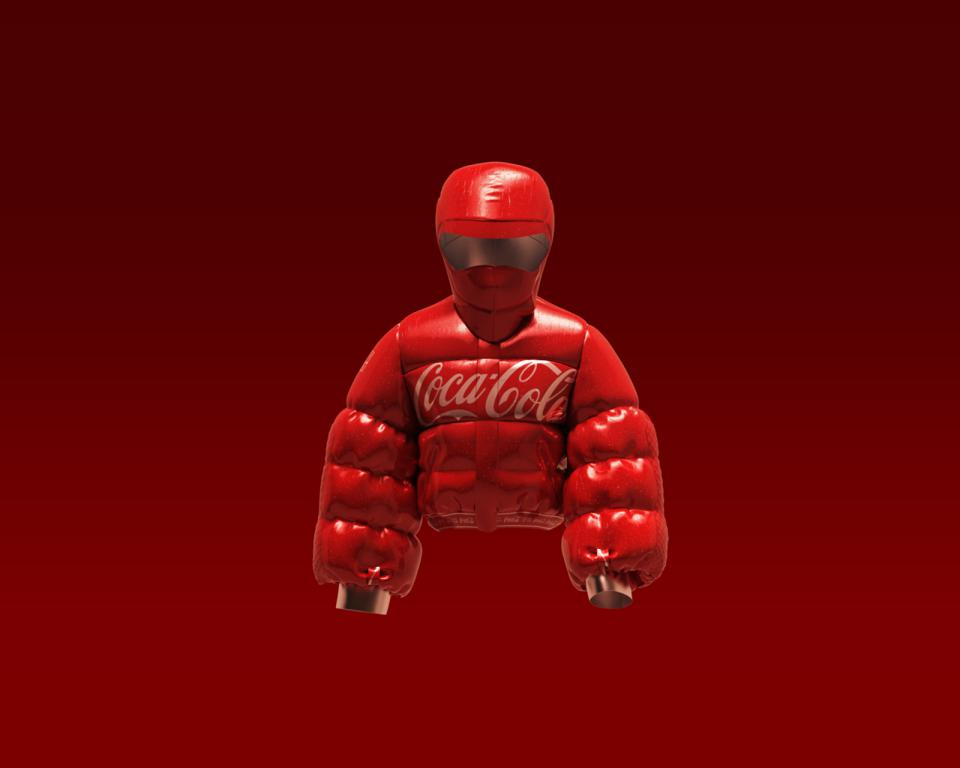
The interesting part is that Coca-Cola hosted a “can-top” party in Decentraland, a virtual destination for digital assets, before launching the auction. In this event, Coca-Cola featured music, giveaways and presented the first look of the Friendship Box.
In addition, Tafi, OpenSea, and the Decentraland Foundation, the representatives of Coca-Cola, opened a live “Ask Me Anything” chat to brief people about the Coca-Cola Friendship Box NFT collaboration. It was also announced that the proceeds from the auction would be donated to Special Olympics International.
As a result, these events added credibility to the experience and created a strong buzz. These activities helped them drive young audiences.
Key takeaways:
- Include some elements of surprises in your NFTs.
- Link and launch your NFT on an important date.
- Create a buzz around it before the launch.
4) ASICS: “Sunrise Red” Digital Shoe
ASICS, a Japanese multinational corporation, is one of the first sportswear companies to release NFTs. They released the 189-piece ASICS Sunrise Red NFT collection, which features nine shoe models:
- GEL-QUANTUM 360™
- GEL-LYTE™ III
- GEL-RESOLUTION™ 8
- METARACER™
- METARISE™
- METASPEED™ Sky
- METASPRINT™
- FLIP FLOPS
- SANDALS
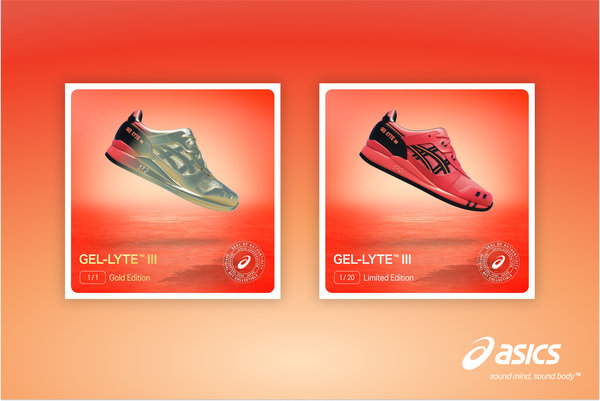
Each of these models has 20 digital copies and a single Gold Edition variant in a special metallic-gold color.
These NFTs were auctioned on the online market OpenSea. The buyers received digital 3D models and textures of their NFT shoes, enabling these new owners to use them in their animation projects and applications such as Metaverse. On the other hand, the Gold Edition shoe owners were given a future NFT.
ASICS announced that all the proceeds from the sale of the NFT would be reinvested into the digital arts community. It aims to promote and encourage digital artists in its Digital Goods Artist-In-Residence Program to make new artworks inspired by ASICS philosophy.
Key takeaways:
- Turn your physical stock into digital versions that match your brand identity.
- Create NFTs to add another revenue stream.
Book My Free NFT Marketing Consultation
Last Word on NFTs for Business
NTF is a new digital asset that allows brands to interact and connect with their consumers in a different way than ever before. New NFTs will be launched as consumers become more informed about NFTs, which will eventually increase the competition.
Although NTF is still in its infancy, as a brand you should focus on how to leverage NFTs in your marketing strategies. You can use them to mint luxury designs of your product and create memorable ad campaigns. You can also collaborate with NFT creators.
Thus, the unique nature of NFTs provides you with an opportunity to stand out in the market by uniquely engaging with your audience, boosting engagement and growing your brand.







